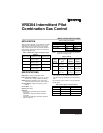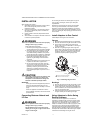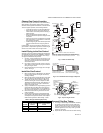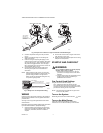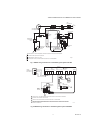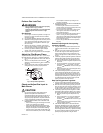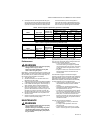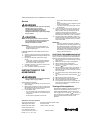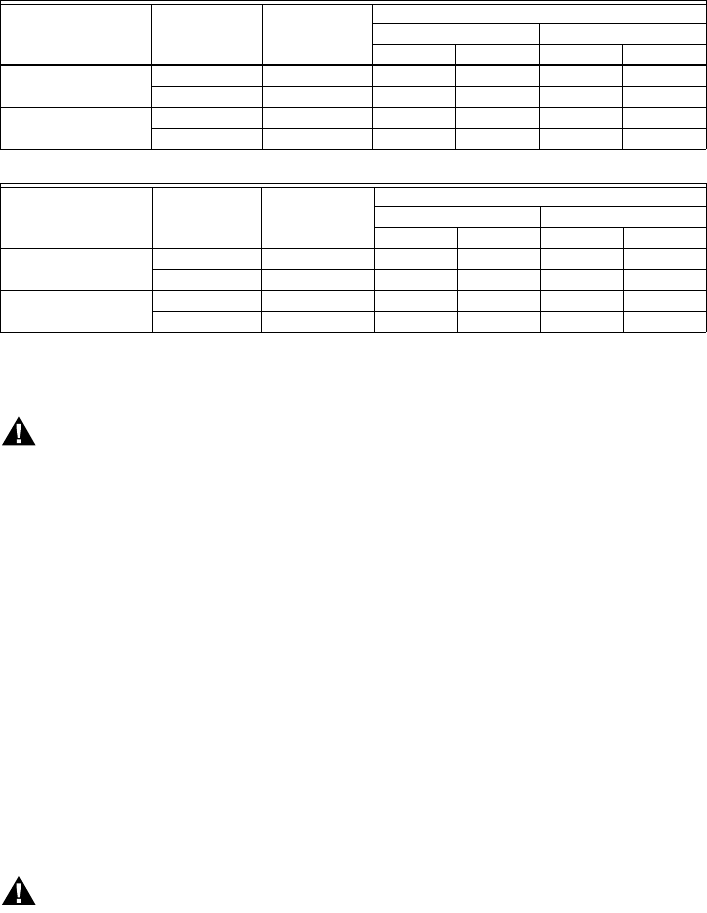
VR8304 INTERMITTENT PILOT COMBINATION GAS CONTROL
7 69-0625—03
5.
Carefully check main burner lightoff at the step pres-
sure. Ensure the main burner lights smoothly and with-
out flashback to the orifice and that all ports remain lit.
Cycle the main burner several times, allowing at least
30 seconds between cycles for the regulator to
resume the step function. Repeat after allowing the
main burner to cool. Readjust the full rate outlet pres-
sure if necessary to improve lightoff characteristics.
Table 6. Pressure regulator specification (pressures in inches WC)
Table 7. Pressure regulator specification (pressures in kPa)
Check Safety and Shutdown
Performance
WARNING
Fire or explosion hazard. Can cause property
damage, severe injury or death.
Perform the safety shutdown test any time
work is done on a gas system.
Read steps 1
–7 below before starting and compare to the
safety shutdown or safety lockout tests recommended for
the intermittent pilot (IP) module. Where they differ, use
the procedure recommended for the module.
1. Turn gas supply off.
2. Set the thermostat or the controller above room
temperature to call for heat.
3.
Watch for spark at the pilot burner either immediately
or following prepurge. See IP module specifications.
4. If the module has timed ignition, time the length of
spark operation. See IP module specifications.
5. After the module locks out, open the gas control
knob and ensure there is no pilot or main burner
gas flow. With modules that continue to spark until
pilot lights or system is shut down manually, the
pilot should light when gas control knob is opened.
6. Set the thermostat below room temperature and
wait one minute.
7. Operate the system through one complete cycle to
ensure all controls operate properly.
MAINTENANCE
WARNING
Fire or explosion hazard. Can cause property
damage, severe injury or death.
Improper cleaning or reassembly may cause
gas leakage. When cleaning, ensure that the
control is reassembled properly and perform
the gas leak test.
Regular preventive maintenance is important in
applications that place a heavy load on system controls,
such as in the commercial cooking and agricultural and
manufacturing industries, because:
• In many such applications, particularly
commercial cooking, the equipment operates
100,000 to 200,000 cycles per year. Such heavy
cycling can wear out the gas control in one to
two years.
• Exposure to water, dirt, chemicals and heat can
damage the gas control and shut down the
control system.
The maintenance program should include regular
checkout of the gas control as outlined under “STARTUP
AND CHECKOUT” on page 4, and the control system as
described in the appliance manufacturer’s literature.
Maintenance frequency must be determined individually
for each application. Some considerations are:
• Cycling frequency. Appliances that might cycle
100,000 times annually should be checked
monthly.
• Intermittent use. Appliances that are used
seasonally should be checked before shutdown
and again before the next use.
• Consequence of unexpected shutdown. Where
the cost of an unexpected shutdown would be
high, the system should be checked more often.
• Dusty, wet, or corrosive environment. Since
these environments can cause the gas control to
deteriorate more rapidly, the system should be
checked more often.
The gas control should be replaced if:
• It does not perform properly on checkout or
troubleshooting.
• It is likely to have operated for more than
200,000 cycles.
• The gas control knob is hard to turn or push
down or it fails to pop back up when released.
Model Type of gas
Nominal inlet
pressure range
Outlet Pressure
Nominal factory setting Setting range
Step Full rate Step Full rate
Standard, slow-opening Natural 5.0–7.0 – 3.5 – 3.0–5.0
LP 12.0–14.0 – 11.0 – 8.0–12.0
Step-opening Natural 5.0–7.0 0.9 3.5 – 3.0–5.0
LP 12.0–14.0 2.2 11.0 – 8.0–12.0
Model Type of gas
Nominal inlet
pressure range
Outlet Pressure
Nominal factory setting Setting range
Step Full rate Step Full rate
Standard, slow-opening Natural 1.2–1.7 – 0.9 – 0.7-1.2
LP 2.9–3.9 – 2.7 – 2.0-3.0
Step-opening Natural 1.2–1.7 0.2 0.9 – 0.7-1.2
LP 2.9–3.9 0.9 2.7 – 2.0-3.0



